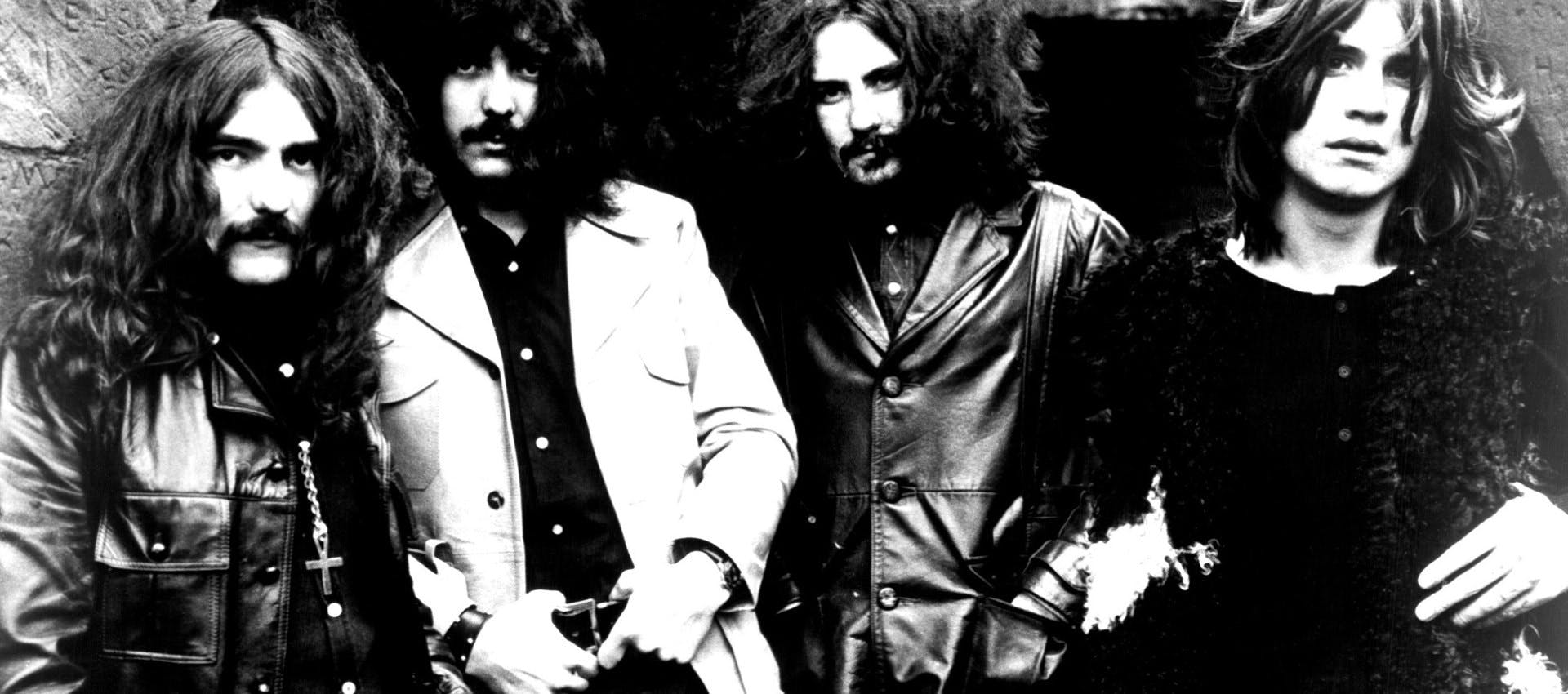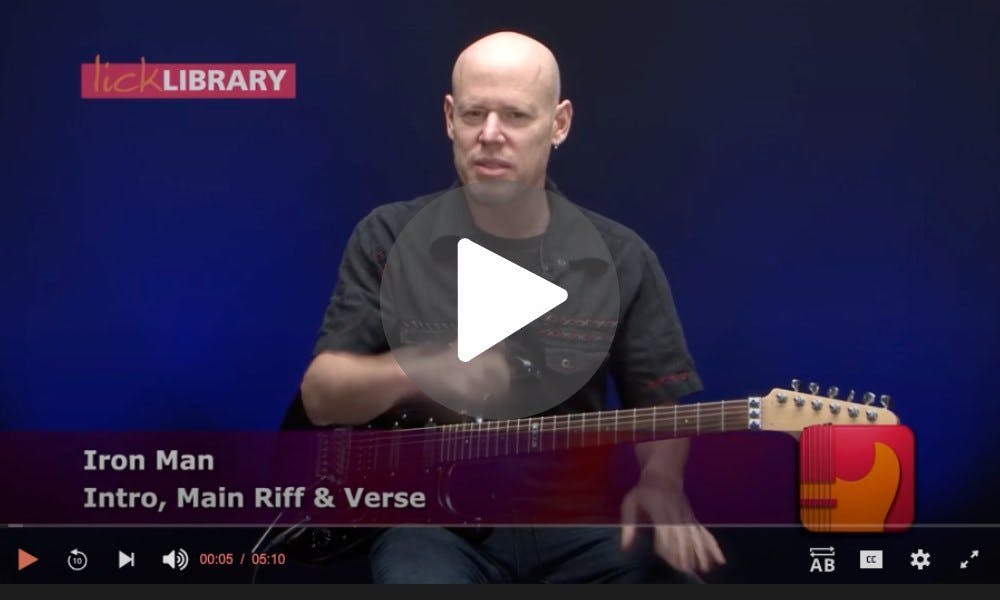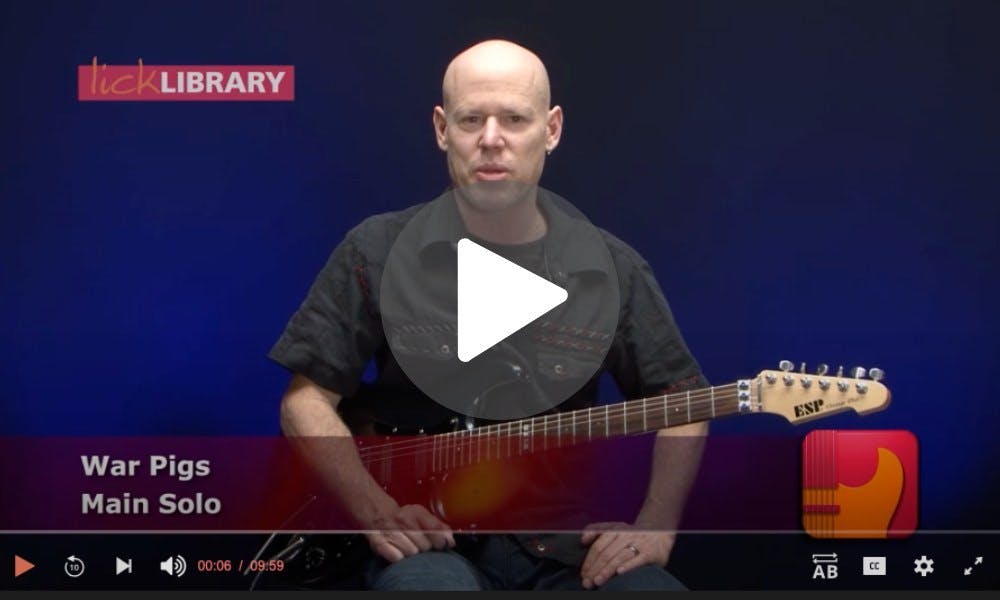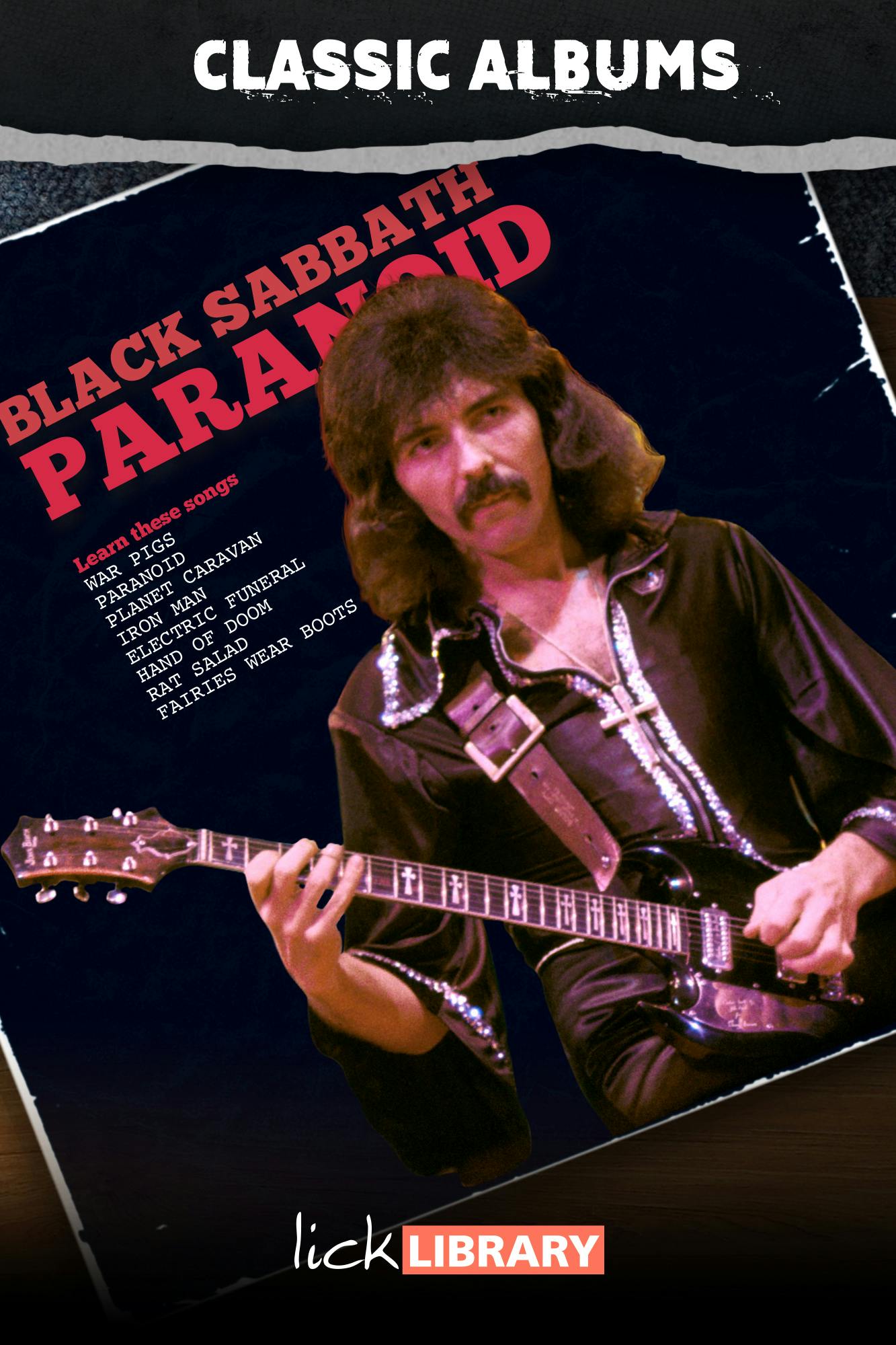
Black Sabbath's Legendary Album, 'Paranoid' Turns 54!
The release of Paranoid by Black Sabbath on September 18, 1970, marked a seismic moment in music history, solidifying the band as pioneers of heavy metal. As we celebrate the anniversary of this legendary album, it's clear that its influence has not waned. Paranoid remains a cornerstone of rock and metal, shaping the sound and spirit of countless bands that followed. The album’s raw, heavy riffs, dark themes, and unrelenting energy redefined what rock could be. Tracks like "War Pigs," "Iron Man," and the title song "Paranoid" are not just classics; they are anthems that continue to resonate with new generations of listeners. Tony Iommi's signature guitar sound—ominous and powerful—combined with Geezer Butler's provocative lyrics and Ozzy Osbourne's haunting vocals, created a unique sound that was unlike anything the world had heard before.
"Paranoid" was conceived in a time of societal unrest, political uncertainty, and the shadow of the Vietnam War, and those influences are embedded in the fabric of the album. It tapped into the disillusionment of a generation, giving voice to their frustrations through a visceral, primal sound that perfectly captured the darker side of the human experience.
Fifty-four years later, Paranoid is more than an album; it's a cultural artifact. It represents the birth of a genre that continues to thrive, with its tracks still blaring through speakers at concerts, bars, and homes worldwide. As we commemorate this anniversary, we celebrate not just the music but the legacy of Black Sabbath—one of the most influential bands of all time. Their work continues to inspire, reminding us of the power of music to both challenge and unite.
The sound of Paranoid is raw, unpolished, and unmistakably dark. At the heart of it is Tony Iommi, the guitarist who helped shape what heavy metal would become.
For guitarists, Paranoid is more than just a collection of powerful tracks—it's a masterclass in riff composition, power chord usage, and unique song structures. By diving into this album, you learn not only iconic riffs but also how to translate emotions into the sonic force that metal demands.
In this article, we’ll explore Paranoid through the lens of a guitarist, breaking down some of the album’s most popular songs, examining Tony Iommi’s unique playing style, and exploring how learning these songs will benefit your own guitar playing. We’ll also dive into some interesting facts about the album’s creation that add a rich layer of context to these iconic riffs.
A Brief Overview of Paranoid
Released in September 1970, Paranoid was Black Sabbath’s second studio album and features eight tracks. It was produced by Rodger Bain and was recorded at Regent Sound Studios in London. The album is widely considered a cornerstone of heavy metal, with its themes of war, insanity, drugs, and existential dread.
The album features several iconic tracks, including "Paranoid", "Iron Man", and "War Pigs", which we’ll break down in detail later. Each of these songs is built on foundational guitar techniques, but with a distinct flair that would set Black Sabbath apart from their contemporaries.
Interesting fact: Tony Iommi lost the tips of two of his fingers on his right hand in a factory accident before becoming a professional musician. To compensate, he down-tuned his guitar to reduce string tension and make it easier to play, which contributed to Black Sabbath’s dark and heavy sound.
1. Paranoid: The Quintessential Heavy Metal Riff
Song Overview
The title track, “Paranoid,” is arguably Black Sabbath's most recognizable song. Interestingly, this track was written in about 20 minutes to fill space on the album. Despite its humble beginnings, the song became a massive hit and helped solidify the band's place in rock history.
The song is fast-paced, with a driving rhythm and a simple, catchy riff that’s perfect for intermediate guitarists to pick up. It’s a perfect example of how effective repetition can be, and why sometimes the simplest ideas are the most powerful.
Breaking Down the Guitar Work
The song is in the key of E minor, a classic key in rock and metal music. The main riff is built around the E5 power chord and features a driving rhythm. The riff uses a mix of palm muting and open string work, which gives it that classic galloping feel.
Main Riff Breakdown:
- The riff starts with an E5 power chord and alternates between an open E and an E5.
- The riff then walks up to a D5 power chord, moving through simple but effective transitions on the A string.
- The whole song stays true to a basic rhythm, relying on a fast, alternate picking technique with a healthy dose of palm muting.
This is a great riff to practice your down-picking stamina as well as perfect your timing when moving between power chords. Iommi’s use of open strings in between chord transitions also adds a unique flair, making the riff sound heavier than its simplicity would suggest.
Why Should You Learn It?
Learning “Paranoid” will improve your ability to move between power chords quickly while maintaining solid rhythm control. The repetitive nature of the riff forces you to focus on precision. It’s a perfect warm-up for beginners to intermediate players looking to get into metal or rock music.
Moreover, it teaches you how to get maximum sonic impact from minimalistic riffs, which is a valuable skill when crafting your own music.
2. Iron Man: A Lesson in Dynamics and Power
Song Overview
"Iron Man" is one of the most iconic metal riffs ever created. The track’s slow, doomy intro is almost cinematic in nature, serving as the auditory equivalent of the lumbering character described in the lyrics. This song is a heavy, mid-tempo riff machine, and it’s an essential for any guitarist interested in metal.
Fun fact: The now-iconic vocal effect on the words "I am Iron Man" was created by running Ozzy Osbourne’s voice through a metal fan.
Breaking Down the Guitar Work
The song is primarily in the key of B minor, giving it a dark and ominous feel. The famous opening riff is based around B power chords and chromatic notes that descend on the lower strings, making the song sound heavier with each passing measure.
Main Riff Breakdown:
- The riff starts with a B5 power chord that moves down chromatically.
- The chromatic descent uses single notes on the A string and plays off of that heavy B5 chord, keeping the tempo slow but deliberate.
- There’s also the use of vibrato and slight bends to make the riff sound more alive.
Dynamic Control:
The main riff in "Iron Man" is a fantastic example of how dynamics can affect the feel of a song. The opening riff is played slowly and with power, but the song speeds up later, shifting from that lumbering beast to a more upbeat, galloping rhythm.
One of the key aspects of this song is the way Iommi uses space and timing. Many guitarists, especially beginners, might rush through slower riffs, but Iommi plays with precision, giving each note and chord room to breathe. This adds to the heaviness of the song.
Why Should You Learn It?
"Iron Man" teaches guitarists the importance of dynamic control. Heavy doesn’t always mean fast, and sometimes the heaviest riffs are the ones that have the most space between the notes. It will also help you develop vibrato control and chromatic phrasing, which are essential for adding personality to your playing.
Additionally, the song’s slower sections offer an excellent opportunity to practice timing and accenting certain notes or chords for maximum impact.
3. War Pigs: Mastering the Art of Riffs and Tempo Changes
Song Overview
“War Pigs” is an anti-war anthem that combines doomy riffs with fast-paced rock sections, making it one of the most dynamic tracks on Paranoid. The song transitions from slow, haunting melodies to faster, more intense sections, keeping the listener on their toes.
This is one of the most musically diverse songs on the album and showcases Tony Iommi’s ability to shift between different tempos and moods without losing the song’s core heaviness.
Breaking Down the Guitar Work
The song is in the key of E minor, much like “Paranoid,” but it has more complex structure and variations. The main riff of “War Pigs” is a slow, blues-influenced progression that makes heavy use of the pentatonic scale.
Main Riff Breakdown:
- The intro riff alternates between an E5 power chord and a descending lick that’s based on the E pentatonic minor scale.
- The use of string bends and slides is more prominent in this song, giving the riff a bluesy, expressive feel.
- The main riff also uses a combination of palm muting and open strings, similar to "Paranoid," but in a much more deliberate and slower fashion.
Tempo Shifts:
One of the most interesting parts of “War Pigs” is how it moves between different tempos and moods. The verses are slow and eerie, while the chorus picks up the pace with a faster rhythm and driving power chords. This contrast adds intensity and makes the song feel like a mini-epic.
The faster sections of the song are also great for practicing alternate picking and galloping rhythms.
Why Should You Learn It?
Learning “War Pigs” will improve your ability to transition between different tempos and moods within the same song. It’s a perfect example of how to build tension in a riff and then release it with faster, heavier sections. This skill is invaluable for anyone looking to write their own dynamic songs.
The song will also help you refine your pentatonic licks and get comfortable with string bending and sliding techniques, which are fundamental to blues and metal playing.
Tony Iommi’s Signature Sound: What Guitarists Can Learn
1. Down-Tuning and Heaviness
One of the defining characteristics of Black Sabbath’s sound, and particularly the Paranoid album, is the heavy use of down-tuning. Iommi famously started tuning his guitar down to C# after his finger injury to make it easier to play. This lower tuning created a heavier, darker sound, which would go on to influence countless metal bands.
For guitarists, experimenting with down-tuning can open up new sonic possibilities. Playing in lower tunings not only changes the feel of the guitar under your fingers but also opens up a new range of tones and heaviness.
2. Power Chords and Minimalism
Another key feature of Iommi’s playing is his economical use of power chords. Much of Paranoid is based on simple but effective power chord progressions. While these are beginner-friendly, the challenge lies in how you play them—whether it's through rhythm, palm muting, or dynamics.
Guitarists can learn a lot from Iommi's approach to minimalist riffing. Sometimes, less is more, and instead of adding complex chords or scales, focusing on perfecting simple riffs can be the most effective way to create memorable music
Interesting Facts about the Making of Paranoid
- The Album Was Almost Called "War Pigs": The original title of the album was supposed to be War Pigs after the anti-war song. However, the record label feared that the title might be too controversial, given the political climate at the time.
- "Paranoid" Was a Last-Minute Addition: As mentioned earlier, the song “Paranoid” was written in just a few minutes to fill space on the album. It quickly became the band’s biggest hit.
- Tony Iommi's Finger Injury Shaped the Sound: As a result of his injury, Iommi created his own custom-fitted leather tips for his fingers, which helped him press down on the strings. His injury inadvertently led to the band’s signature sound, as he had to tune the guitar lower and play in a way that suited his new limitations.
- Ozzy Osbourne Didn't Like "Paranoid" at First: Despite the song’s success, Ozzy Osbourne wasn’t initially a fan of “Paranoid,” thinking it was just a filler track. He later admitted that he was wrong, as the song became one of their most beloved tracks.
Paranoid by Black Sabbath is an essential album for guitarists of all levels. Tony Iommi’s riffs are deceptively simple yet powerful, and the album’s blend of dark themes, heavy riffs, and dynamic song structures make it a perfect playground for any guitarist looking to improve their rhythm, timing, and dynamics.
By learning songs like “Paranoid,” “Iron Man,” and “War Pigs,” you not only gain technical skills but also insight into how to craft effective, emotionally powerful music. Tony Iommi’s legacy as a guitarist lies not just in his iconic riffs but in the way he created an entire genre out of necessity, resilience, and creativity.
If you’re looking to become a better guitarist—especially in the realm of rock and metal—there’s no better place to start than with Paranoid.



